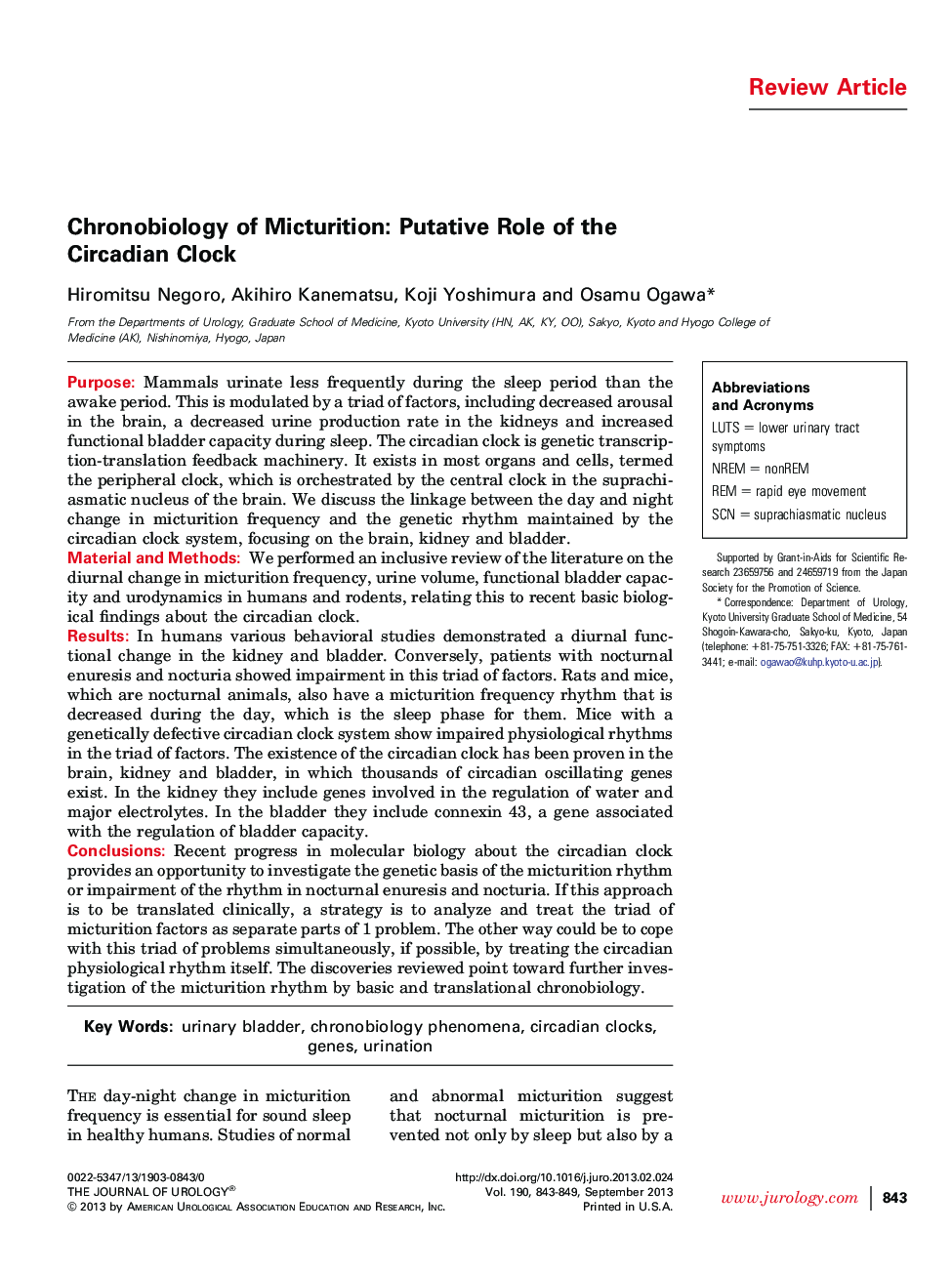| کد مقاله | کد نشریه | سال انتشار | مقاله انگلیسی | نسخه تمام متن |
|---|---|---|---|---|
| 3862430 | 1598915 | 2013 | 7 صفحه PDF | دانلود رایگان |

PurposeMammals urinate less frequently during the sleep period than the awake period. This is modulated by a triad of factors, including decreased arousal in the brain, a decreased urine production rate in the kidneys and increased functional bladder capacity during sleep. The circadian clock is genetic transcription-translation feedback machinery. It exists in most organs and cells, termed the peripheral clock, which is orchestrated by the central clock in the suprachiasmatic nucleus of the brain. We discuss the linkage between the day and night change in micturition frequency and the genetic rhythm maintained by the circadian clock system, focusing on the brain, kidney and bladder.Material and MethodsWe performed an inclusive review of the literature on the diurnal change in micturition frequency, urine volume, functional bladder capacity and urodynamics in humans and rodents, relating this to recent basic biological findings about the circadian clock.ResultsIn humans various behavioral studies demonstrated a diurnal functional change in the kidney and bladder. Conversely, patients with nocturnal enuresis and nocturia showed impairment in this triad of factors. Rats and mice, which are nocturnal animals, also have a micturition frequency rhythm that is decreased during the day, which is the sleep phase for them. Mice with a genetically defective circadian clock system show impaired physiological rhythms in the triad of factors. The existence of the circadian clock has been proven in the brain, kidney and bladder, in which thousands of circadian oscillating genes exist. In the kidney they include genes involved in the regulation of water and major electrolytes. In the bladder they include connexin 43, a gene associated with the regulation of bladder capacity.ConclusionsRecent progress in molecular biology about the circadian clock provides an opportunity to investigate the genetic basis of the micturition rhythm or impairment of the rhythm in nocturnal enuresis and nocturia. If this approach is to be translated clinically, a strategy is to analyze and treat the triad of micturition factors as separate parts of 1 problem. The other way could be to cope with this triad of problems simultaneously, if possible, by treating the circadian physiological rhythm itself. The discoveries reviewed point toward further investigation of the micturition rhythm by basic and translational chronobiology.
Journal: The Journal of Urology - Volume 190, Issue 3, September 2013, Pages 843–849